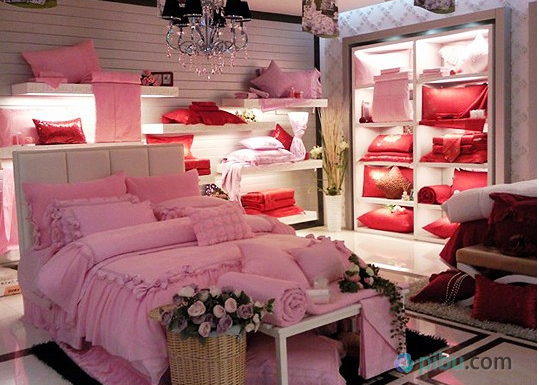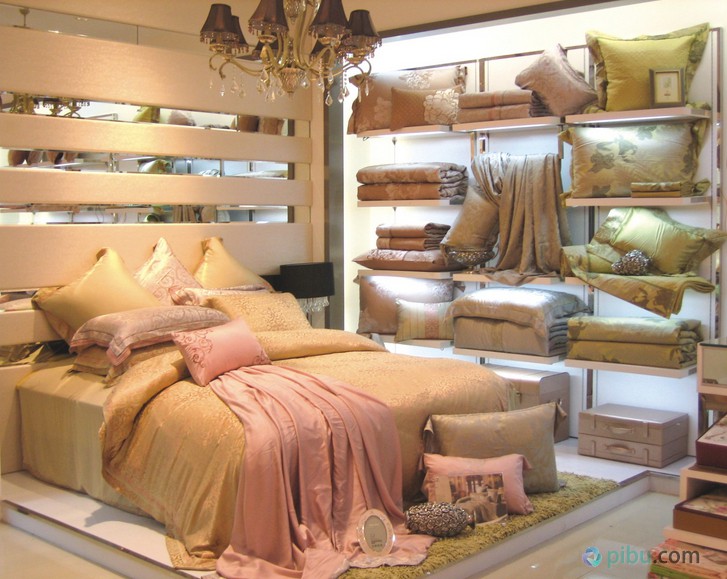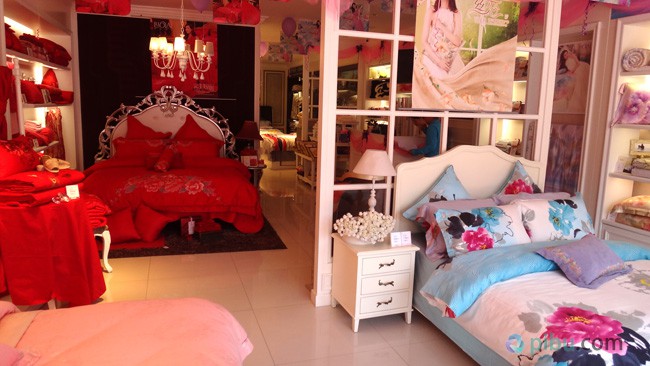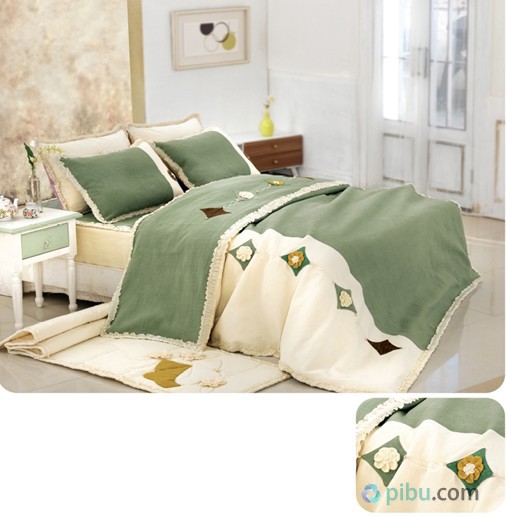With the development of science and technology faster and faster, science and technology life has entered our millions of households, science and technology are also affecting us in all aspects of life, the same, home textiles are also moving towards the era of science and technology ~ Xiaobian to everyone today to introduce The most complete functional home textile ~
Antistatic home textile fabric
In the field of home textiles, synthetic fibers make up for the shortage of natural fibers and are used in large quantities. However, they have poor hygroscopicity and are prone to accumulation of static electricity. The woven textiles are easy to vacuum, stain, and have poor air permeability. In severe cases, they can cause electric shocks and even cause Fire. Therefore, people hope that textiles can have anti-static properties, that is, fabrics themselves can eliminate static electricity. There are two kinds of antistatic methods at present: one is the antistatic treatment of the fabric, and the other is the use of antistatic finishing agent in the finishing to introduce a hydrophilic film on the surface of the fiber, which can improve the hygroscopicity of the fabric and reduce the coefficient of friction. And surface resistance; Second, the first fiber into conductive fibers, and then woven into conductive fabrics. Anti-static fabrics have been applied to beddings , curtains and other home textile products.

Antibacterial home textile fabrics
Textile fabrics with antibacterial functions play an extremely important role in preventing germs from invading. Daily products made of antibacterial functional textile fabrics have gradually been paid attention to by people, and with the development of science and technology, the details of life are widely and deeply radiated to life. in. The use of textiles and household products made of anti-mite and anti-bacterial fibers can not only suppress or drive fleas, but also effectively prevent the occurrence of skin diseases related to dust mites. It can also antibacterially and inhibit the growth of bacteria, thus improving people's living environment. purpose. Antimicrobial home textiles can be obtained by coating or resin treatment on fabrics, which are commonly used in natural textiles. Antibacterial agents may also be added to the fiber stock solution for blending and spinning, or ordinary fiber grafted antibacterial agents may be used to make antibacterial fibers, and then the antibacterial fibers may be woven to obtain antibacterial home textiles. Currently widely used antibacterial products include bedding, cotton wool, bed sheets, towels, towel covers, cotton blankets, carpets, bathrobes, rags, sofa cloth, wall coverings, mops, tablecloths, napkins, and shower curtains. 
UV-resistant home textile fabrics
Ultraviolet rays are harmful to the human body. If people radiate ultraviolet rays for a long time, they will have dermatitis, pigmentation, accelerated aging of the skin, and even cancer. If textiles can be made into UV-resistant textiles, the harm to the human body will be greatly reduced. Anti-ultraviolet radiation has two treatment methods: First, after finishing; Second, directly made of anti-ultraviolet fiber, and then weaving fiber into fabric. The so-called anti-ultraviolet fiber is UV-shielding agent made of UV-spun fibers by spinning, the matrix has synthetic or artificial fiber, the fiber of the fabric of the UV screening rate of 95%, suitable for curtains and other household UV textile.

Flower type
At present, the fabric patterns that are widely popular are processed through jacquard, printing, embroidery, planting flowers, ginning, cutting flowers, burnt-out, roasted flowers, spray flowers, decals, and grinding flowers. For example, printed fabrics are special products combining technology and art. In some cases, the commercial value of printed fabrics depends to a large extent on the design of the designs and the printing effect. The novel and unique designs can give fabrics vitality. , The same fabric, printed with different patterns, that reflects the different wearing effect. There are many new changes in the printing process, such as the use of paint, gold and silver thread, padding, etc., and combined with jacquard to create a rich visual effect. The fabric's design style has breakthroughs in the style of patterns, patterns, and color designs. It strives to be fashionable and popular. It also emphasizes the ingenious combination of various styles and reflects a variety of styles. The fabric structure of hemp fabric varies and the composite tissue produces stripes and squares. The use of tissue-fitting stripes brings a rich appearance. Patterns combined with yarn-dying techniques make linen fabrics richer in pattern and pattern. In silk jacquard fabrics, different raw materials, threads or tissues enhance the contrast of the fabric surface, presenting an embossing effect, and a beautiful and dynamic pattern to give the fabric a flowing and luxurious feeling. The colorful fold style is also an important expression of silk fabrics. The multi-incorporated, twisted medium strong silk yarn is used as weft yarn, and the surface of the fabric is wrinkled by curling. The silk stripe effect is still popular. The combination of plain weave, twill weave, and change organization creates a variety of vertical stripes on the surface of the fabric. The style is unique. 
Functionality and high-tech
With the strengthening of people's awareness of environmental protection, the requirements for textiles have gradually expanded from softness and comfort, moisture absorption and breathability, and wind and rain protection to the prevention and control of mildew, odor, UV, radiation, flame retardant, antistatic, and health care. Such functional and environmental aspects, and the development and application of various new fabrics and the development of new technologies and new technologies have made these requirements gradually realized. Functional home textiles refer to home textiles with special functions such as safety functions, comfort functions, and hygiene functions. At present, China's functional home textiles are mainly concentrated in health care effectiveness, such as antibacterial, deodorant, anti-mite products, and healthy sleep bedroom products.
For more content, please follow this site
Fdy With Foil Print Fabrics,Crush Velvet,Embossed Velvet,Deep Processing
SHAOXING TUNING INTERNATIONAL TRADING CORP. , https://www.tuningtex.com